Edit Details Tool
Table of contents:
Introduction
Edit Details
Modes
Additional Settings
Hello!
Welcome to the article, in which we are going to learn about SelfCAD's 3D modeling tool called Edit Details. I am going to explain all of its ins and outs and present its general applications. On top of that, I will share a few Tips and Tricks that you could use with Modifiers.
Edit Details is one of the Modify tools available in SelfCAD that you can find in the main Toolbar, in the Modify drop-down list. It allows you to Add and Remove details of the level of the detail of the selected objects or selected regions of the object.
Modify is a unique category because the tools in it do not rely on the topology of the object to apply their modifications. Instead, they cut the object and add to its topology when needed.
Follow the article to learn all about this tool!
Select the object

The first step of using any modeling tool is selecting the object on which you want to use it. You can select objects by either left-clicking on them in the workspace or by selecting them in the Object Management section, in the right-side panel. The second option has an in-built search engine, which is extremely useful when you are working with multiple objects.
Activate the tool

Once the object is selected, you can access the tool itself. To activate the Edit Details tool, you need to select it from the Modify drop-down list in the Main Toolbar or use a shortcut by pressing the ‘M+D’ combination on your keyboard. This way, you’ll open a Tool Setting panel with all of the available, customizable options for this tool on the left side of your screen.
Modes

The first thing you will notice in the Edit Details tool is that there are two different modes of operation available that will change its functionality. They are called Add and Remove, which allows you to Add and Remove Details from the selected object based on the set of customized options. You can Add, and Remove Details from the object by clicking on specific parts of the geometry. You can also look into the Tool Settings Panel, where you will find tips on how to operate this tool in the selected mode.
Add Vertex
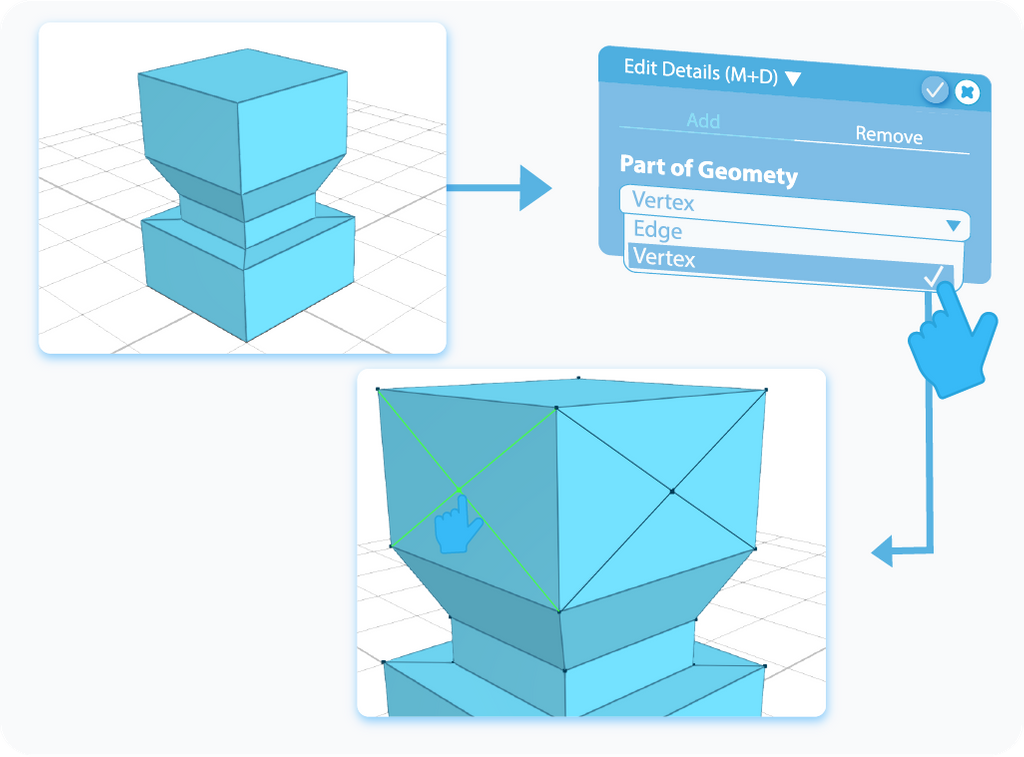
In the Add Details section, the first option allows you to select the part of the geometry that you want to add to the object. One of those parts is called Vertex. You can add them to the object by simply clicking at any place on the model to add a new Vertex. Naturally, creating a Vertex will also create additional edges, connecting it to the rest of the topology.
Add Edge
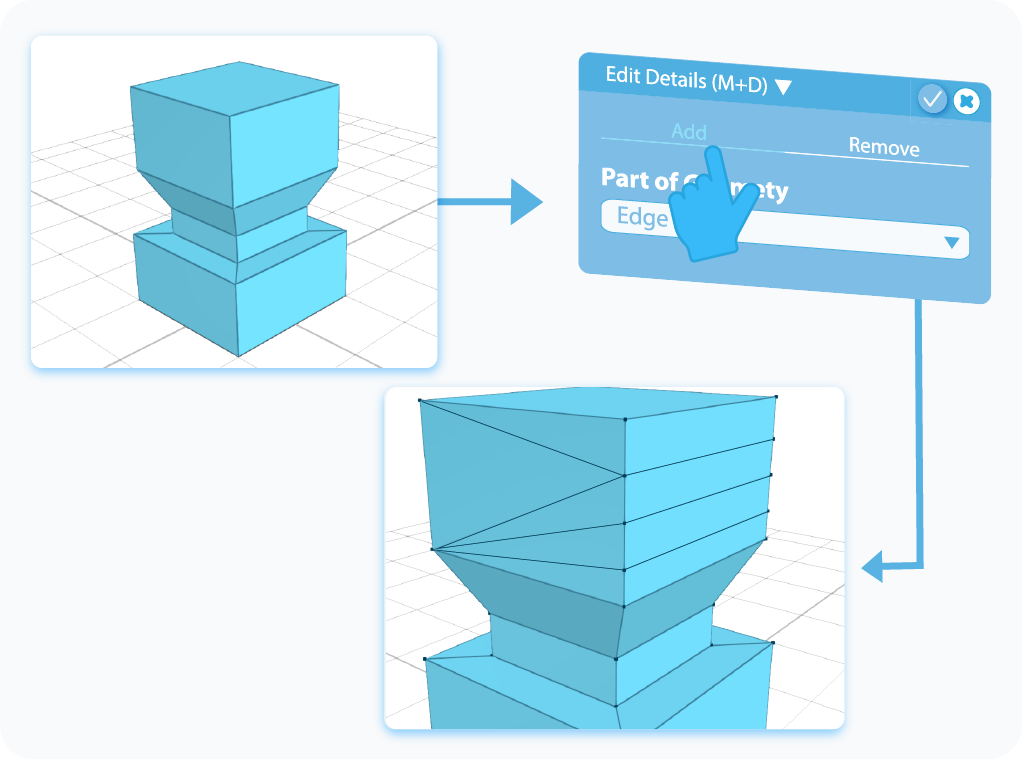
The second part of the geometry that you can add to the model is called Edge. Similar to the previous option, adding Edge to the model will create additional details that will connect it to the rest of the model's topology. There are two ways of adding Edges, and both of them will be explained in the following paragraph.
Drag and Draw
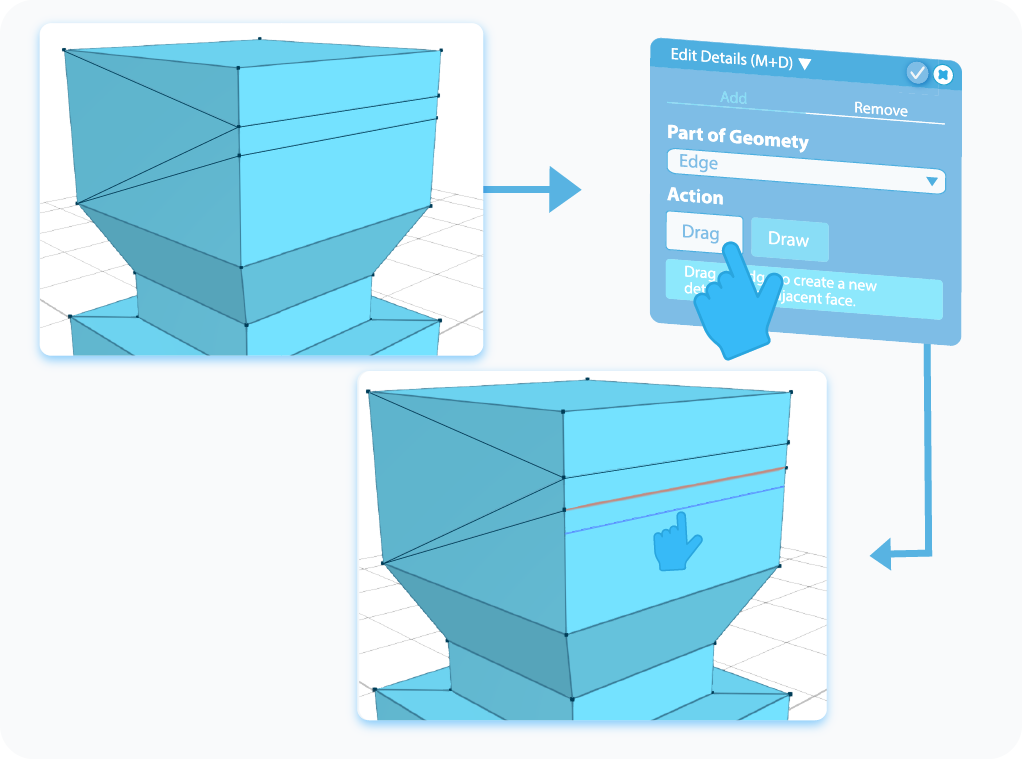
There are two actions you can take to Add Edges to the model, and it is by Drag or Draw modes. To Drag the Edge, you have to move your cursor over one of the existing edges, which will copy its position. After that, you can place a new Edge in the place of your choosing.

To Draw an Edge, you have to select a starting point of the topology of the object and choose the angle of rotation of the new Edge.
Based On
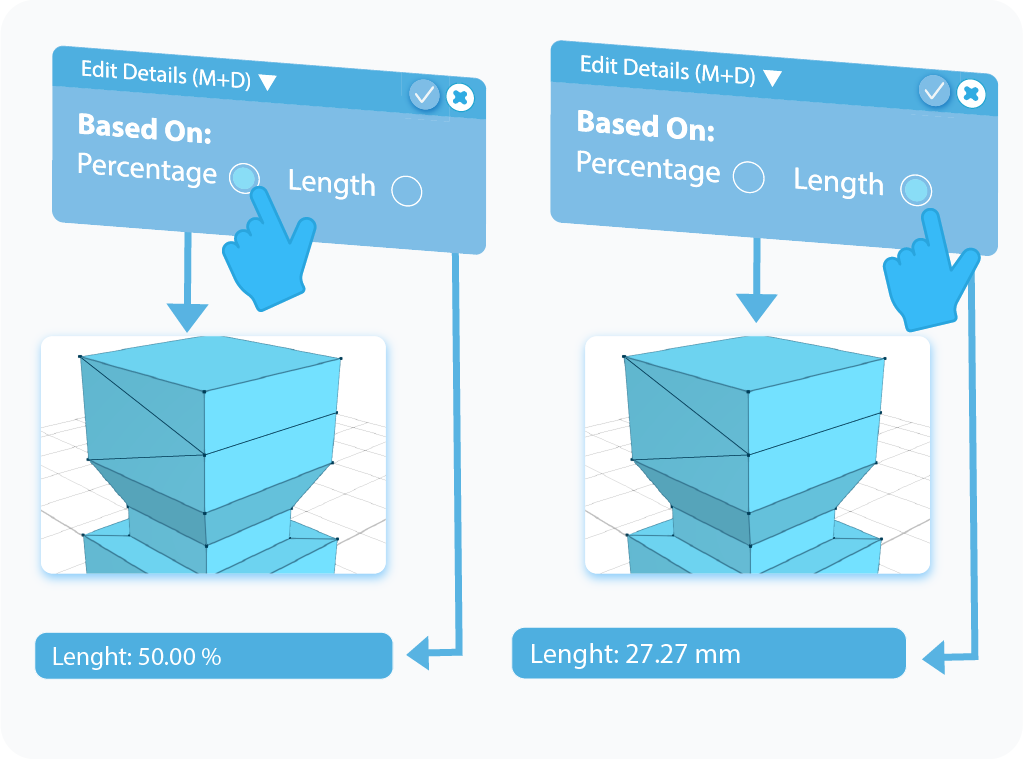
Based On is a setting that allows you to customize the position of the created Edge. You can choose to base it on the Length, or the Percentage, which will change the calculation behind the placement. This option will calculate the position of the ends of the Edge separately, which can yield interesting results.
Offset

Offset is another feature available for adding edges in the Drag mode. By enabling it, you will be able to select an Edge and create two new edges on both of its sides based on the pre-set distance.
Automatic Loop Finding
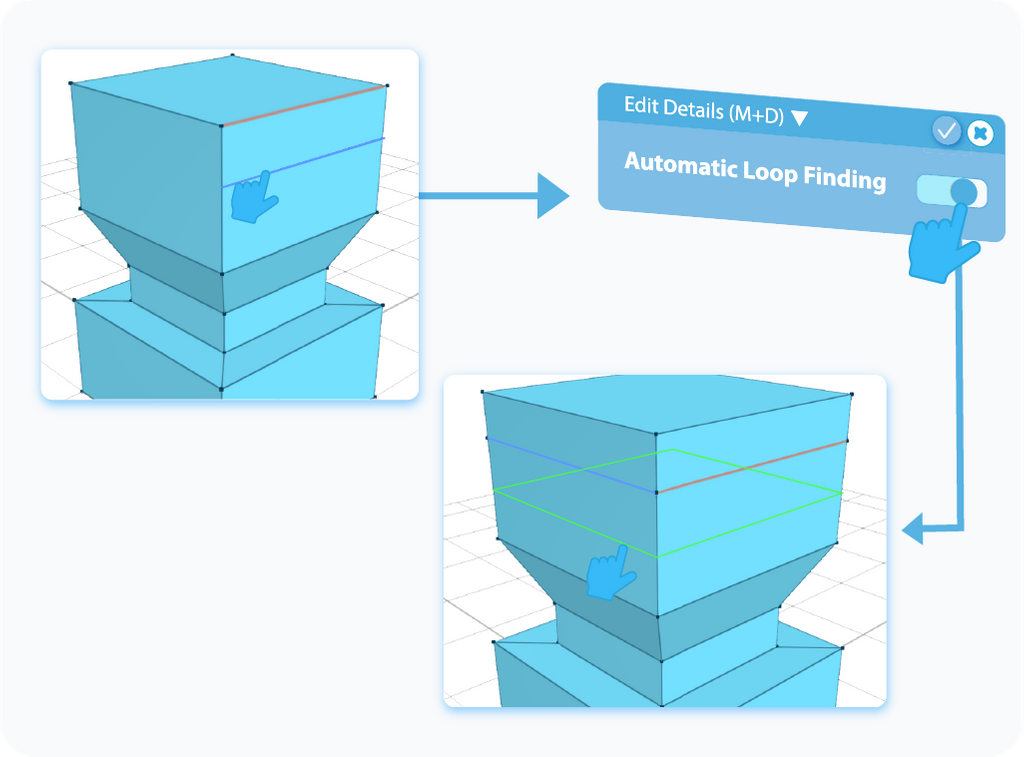
Automatic Loop Finding is a feature available for both Adding Edges to the model and Removing Detail from the model. By enabling this option, the software will try to Add Edges all around the object to create a Loop. When Removing Detail, on the other hand, it will Remove the Loop from around the object if possible.
Ring Finding
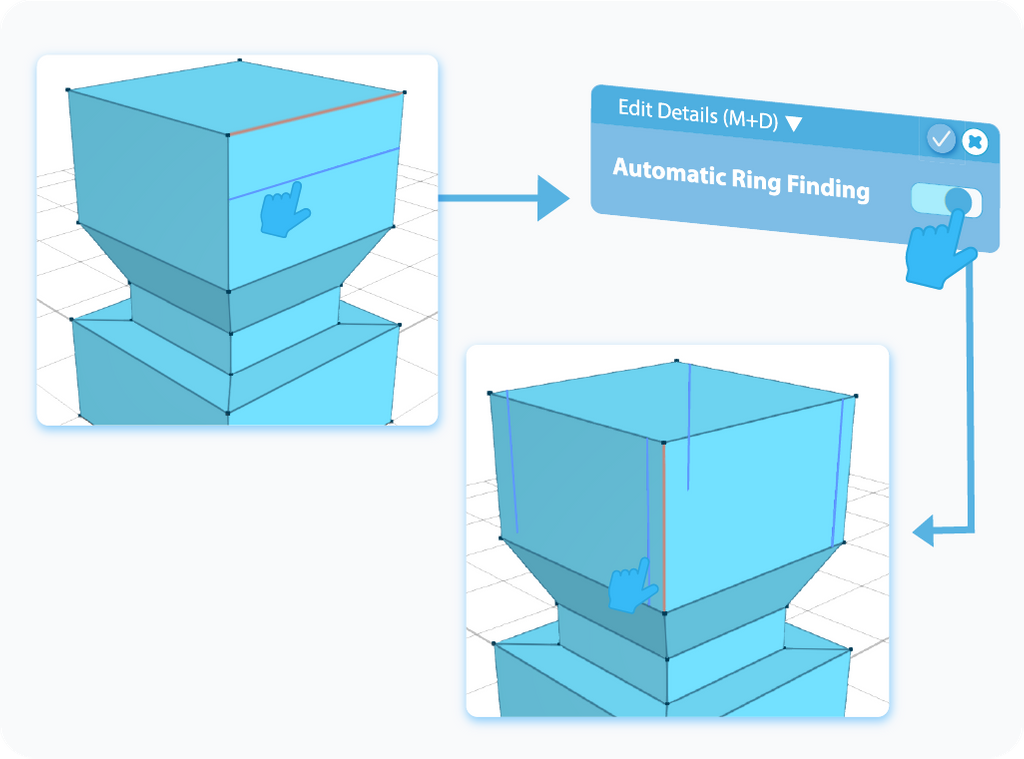
Automatic Ring Finding is a feature available solely for Adding Edges to the model in the Drag mode. After enabling it, you will add Edges all around the object, hence the name. Naturally, the more edges the object has, the more of them you will add with this option.
And that’s about it for the Edit Details. After reading this article, you should know the basics of this tool and how to use it, and know about its different applications. Of course, the graphics shown here were just examples, and using this tool on other shapes will give you slightly different effects, but its underlying principles will always stay the same.
That's all I have for you today. I wish you success in your future projects. See you, and stay tuned for more content to come!
Haven't tried SelfCAD yet? Register now, and try it out for free!
Do you want to learn 3D modeling? Check out our interactive tutorials.




